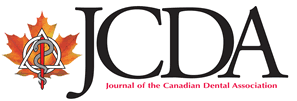 |
Current Issue | Subscriptions | ||||||
| Back Issues | Advertising | |||||||
| More Information | Classified Ads | |||||||
| For Authors | Continuing Education | |||||||
|
||||||||
 |
|
Location of Canal Isthmus and Accessory Canals in the Mesiobuccal Root of Maxillary First Permanent MolarsFULL TEXT
• Alphonsus Tam, BSc, DDS • A b s t r a c tMethods: From 50 selected first permanent molars, sections of the MB root at 3, 4 and 5 mm from the apex were prepared, acid-etched, washed and dried. The apical side of each section was sputter-coated with gold, examined by a Results: Overall, 18 (36%) of the 50 MB roots had one canal, whereas 32 (64%) had 2 canals. Of the roots with 2 canals, 10 (31.25%) contained either a complete isthmus or accessory canals or both between the 2 main canals. Another 10 (31.25%) showed partial isthmus formation. Clinical Significance: MB roots exhibit a variety of canal configurations. On the basis of these findings, we propose a classification of the resected root surface of the MB root. Prudent judgement in preparing the canal isthmus,
MeSH Key Words: apicoectomy; dental pulp cavity/anatomy & histology; human; molar/anatomy & histology
Reply to this article | View replies [0]
|
|
|
Full text provided in PDF format |
|
| Mission Statement & Editor's Message |
Multimedia Centre |
Readership Survey Contact the Editor | Français |
|